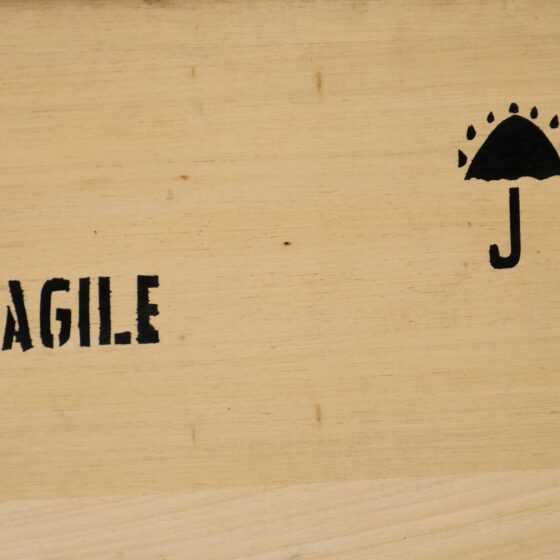It’s clear to everyone that gifts are a big part of the holiday season’s magic. This is why the newest put special attention to presents.
Indeed, putting the attention on togetherness and sharing instead of separation and pandemics is possible, but at what price? Check out the Xmas stats we’ve prepared for you and find out how much people spend, save and gift for Christmas.
Top 10 Christmas Spending Statistics
- The typical American family spends 1% of their year’s salary on holiday season gifts.
- 31% of US holiday shoppers would rather buy gifts for their pets than their friends.
- On Average, European countries spend only €193 ($215) on Christmas gifts.
- This year, Christmas shoppers are expected to spend about $910 billion online.
- 53.2% of Americans get Christmas gifts for themselves as well.
- The British start their holiday shopping in September.
- Holiday buyers see an out-of-stock message 172% more due to supply chain shortages.
- 11% of Americans wish to skip Christmas gifting altogether.
- In the US, the average Xmas budget per individual was expected to be $998 in 2021.
- 21% of Americans plan to lower their Xmas expenditures this year.
Christmas Shopping Statistics from Around the Globe
Over 2 billion people worldwide celebrate Christmas and consider it the most important holiday of the year. Still, the way they do it can vary from one country to another, and so do the stats of their Xmas spending habits. Let’s take a closer look.
1. Last Xmas, shoppers spent $295.6 million on Google Play Store and Apple App Store gaming apps.
(Statista)
Moreover, global game app sales had actually risen by a whopping $63.2 million compared to the year before. This leads to the conclusion that the recorded growth is a consequence of the COVID-19 pandemic.
2. This holiday season, Christmas shoppers are expected to spend about $910 billion online.
(ZDNet)
Adobe estimates based on online transactions data in over 100 countries confirm that online buying is on the uptrend across the globe.
3. In Russia, the most desired Christmas gift is money.
(Deloitte)
According to Deloitte’s New Year & Christmas Spending Survey for 2021, 52% of Russian men and 63% of Russian women prefer the gift of money above anything else. The second most popular gifts were smart accessories (for men) and cosmetics or perfumes (for women).
4. The British start their holiday shopping in September.
(WU)
In the UK, holiday shopping begins about two months earlier than in the States, and continues through December. Xmas shoppers spend an average of £1,049 ($1,360) on gifts for spouses, significant others, and children.
5. One-third of British consumers have no clue how much money they spend on gifts.
(OceanFinance)
Only 16% of British shoppers can remember the exact amount of money they spent after Christmas shopping. Not only that, but of the poll participants who had an estimated idea, their guesses were incorrect by 17%.
6. According to data for 2019, the average amount spent on Christmas gifts in European countries is just €193 ($215).
(Statista) (InsightDIY)
Europeans’ Xmas budget is pretty modest even when the #1 spender is included—the UK. This country’s average shopper will set aside €336 for gifts. Additionally, UK citizens were expected to spend around $112.8 billion (£84.7 billion) in the six weeks before Christmas 2021.
7. 3.6 million Japanese families spend money on KFC for Christmas.
(JRailPass)
Kentucky Fried Chicken has been a favorite Christmas meal option for the Japanese for decades. In fact, in 1974, KFC Japan launched a successful national Christmas marketing campaign.
Believe it or not, the demand for KFC is so high in Japan during Christmas that people begin placing their orders six weeks prior to the festivities!
Less-Known US Christmas Spending Facts
Over 90% of Americans celebrate Christmas regardless of their religion. The following Christmas time facts will tell you where they stand in terms of expenditure.
8. 53.2% of Americans get Christmas gifts for themselves as well.
(RetailDive)
Additionally, 20.4% of the consumers planning to shop for themselves will buy shoes and clothes. Other popular self-gifts include electronics and home furnishings (11.5% and 8.3%, respectively).
9. Typically, one person buys gifts for eight recipients.
(Fool)
Keep in mind that this doesn’t just refer to people, but to pets too. Less than 39% of survey participants claimed that they would purchase presents for between one and five recipients, while 19% would do the same for 11–25 individuals and pets.
10. 31% of Christmas shoppers would rather buy gifts for their pets than their friends.
(Fool)
One holiday gift-giving poll shows that people love to purchase presents for their pets. Another 30% said they didn’t intend to buy their pets gifts, and another 30% of shoppers fell into the “not applicable” category—meaning they likely are not pet owners.
11. 80% of shoppers wrap holiday gifts themselves.
(Fool)
The interesting part is, only 69% believe they’re good at wrapping presents. More specifically, when shoppers were asked to rate their present-wrapping skills, 45% called themselves “somewhat good,” and only 24% went with “very good.”
12. Almost half of US citizens don’t purchase Christmas decor every year.
(Statista)
Interestingly, according to a survey that analyzed over 1,000 Americans’ responses, 14% claimed they would be satisfied getting holiday decor as gifts. Fortunately, 10% of survey respondents intended to buy Christmas decorations for their family and friends.
Gift Giving Statistics and Facts
Americans are avid shoppers, especially during the holiday season. However, in about half of the cases, they don’t choose the right present. So, what do they really want underneath their Christmas tree? These facts and stats will give you a clue.
13. The average American family spends 1% of their yearly salary on holiday season gifts.
(PBS)
This percentage is derived from an extensive Consumer Expenditure Survey. Namely, it’s run each year by the BLS (Bureau of Labor Statistics) and focuses on the spending habits of 12,000 –15,000 families.
14. On average, women spend 20 hours shopping for Christmas gifts.
(WEF)
On the other hand, men spend half that time Christmas shopping, making the average shopping time around 15 hours. Based on stats, shoppers spend more than three hours waiting in line and an additional three hours wrapping presents for loved ones.
15. About half of the gift receivers in the US have lied about liking what they got for Xmas.
(PRWeb)
Stats reveal that 46% of US citizens lied about being pleased with a holiday gift, while 32% have re-gifted a present.
Not only that, but 10% of them have resold a present on eBay, and 50% of survey participants kept their unwanted presents but never used them. It’s hard not to wonder how much of the money spent on Christmas is worth it.
16. Gift cards are the most desirable Christmas present.
(NRF)
According to the NRF, 56% of American consumers want a gift card as a Christmas present. Survey results show that 47% want clothing and accessories, and Books and other media were third on the list of most-wanted Christmas presents (32%), and electronics were fourth (26%).
17. 47% of American women want jewelry for Christmas.
(PRWeb)
Meanwhile, men are happier to receive gift cards for a holiday (32.3%). Furthermore, 32% of men want to get clothes for Christmas, and 26% want to receive money.
The Latest Figures for the 2022 Holiday Season
Luckily for retailers, the 2021 holiday season was expected to bring a 10.5% increase in sales, nearing the pre-pandemic value. However, some purchasing habits acquired during the pandemic outbreak remain in full power. We go into details in the following stats.
18. Holiday shoppers were expected to spend between $843.4 billion and $859 billion throughout November and December of 2021.
(NRF)
Americans are about to spend up to 10.5% more than they did during the 2020 holiday season ($777.3 billion). Moreover, the National Retail Federation’s calculations show that there’s been a 4.4% YOY increase in the spending figures of the last five years during the holiday season.
19. The average Christmas budget per individual was expected to be $998 in 2021.
(Bankrate)
Pandemic or not, stats show a steady yearly increase in Americans’ amount to spend for Christmas. The NRF reports that out of the above-given sum, $648 will be spent on presents, $231 on food, decorations, and cards, and $118 will be set aside for non-gift purchases.
20. 21% of Americans plan to lower their Xmas expenditures this year.
(Credit Cards)
Of that percentage, 21% think the best way to do so is limiting the budget for decorations. Another 18% said they’d limit entertaining, while others mostly plan to economize on gifts (17%) and travel (16%).
On the other hand, 48% of Americans plan to spend as much as they did last year. Only 13% said they’d spend more than the previous holiday season.
21. The US may reach up to $226.2 billion in online purchases for Christmas.
(NRF)
More and more of what the average American spends on Christmas is bought online.
For the 2021 season, the NRF was predicting that non-store sales would increase between 11% and 15% and reach at least $218.3 billion, or a maximum of $226.2 billion. This is a solid increase in non-store shopping compared to the $196.7 billion reached in 2020.
22. Americans are willing to devote $251 on average for the cost of Christmas gifts for their significant others.
(CNBC)
Gifts for immediate family members like spouses and kids make about 50% of the holiday spending budget of the average American.
23. 11% of Americans wish to skip Christmas gifting altogether.
(Credit Cards)
Four in every five Americans would like to spend less on Xmas presents this year. Besides limiting the number of people they’d give presents to, this part of the population will also try to lower the costs in three other ways.
As a Credit Card survey revealed, they’ll be gifting second-hand items (14%), homemade gifts (24%), and will be re-gifting (14%). Furthermore, most of those that want to cut holiday expenses (82%) are already in debt.
US Christmas Spending Trends
The easing of the pandemic and the slight economic recovery gave Americans the grounds to spend more on enjoyable activities and gifts for this holiday season. Still, there have always been ups and downs to specific shopping trends. Find out more on that in the following section.
24. 85% of this year’s holiday shoppers will buy their gifts online, while 74% will be shopping both online and in stores.
(NPD)
Almost half of those that like buying online gifts (49%) do it to ship them directly to the recipient. Interestingly, 47% of online buyers see free shipping as an important factor in deciding on the right e-shops.
25. Holiday buyers see an out-of-stock message 172% more due to supply chain shortages, as Christmas stats show.
(ZDNet)
Adobe discovered that the number of out-of-stock alerts increased by 172% compared to the pre-pandemic holiday season period. According to Adobe’s index, apparel, sporting goods, baby products, and electronics have the highest number of out-of-stock messages.
26. The highest ever average Xmas spending estimate was recorded in 2019.
(Gallup)
That year, the average American spent $942 on the last holiday season of the pre-pandemic era. Two years into the pandemic, this is still the most generous Christmas spending ever recorded in American history.
27. Holiday sales are expected to reach at least $1.28 trillion.
(Deloitte)
Deloitte’s retail and distribution survey forecasted that the 2021 season would mark an increase of 7% to 9% compared to the previous one. The stats refer to the period from November through January.
Conclusion
All in all, the numbers above demonstrate how gigantic the holiday season is. Besides spending an incredible amount of money on Christmas gifts and festive food, consumers spend a lot of time choosing the perfect tree and decorating their homes. No wonder Christmas can be a bit stressful.
So let us know, how much are you planning to spend for Christmas this year? Were you surprised by our findings, or did you expect the high figures? At the end of the day, make sure to enjoy the festivities and give yourself some well-deserved time off.
Happy holidays from our team to your family!
FAQ
How much does the average person spend for Christmas?
It’s estimated the average American will spend around $998 this holiday season. The average gift budget is $648, while the rest is reserved for cards, food, decorations, and non-gift purchases.
(Bankrate)
Which state spends the most on Christmas?
Last year, the average North Dakotan spent about $1,324 on Christmas, making this state the champion of Christmas shopping nationwide. It was followed by Vermont ($1,202), Maine ($1,188), Massachusetts ($1,178), and Montana ($1,166).
(DEMDACO)
What percentage of Christmas shopping is done online?
Approximately 85% of this year’s holiday shoppers will be buying gifts online, 74% of whom will be combining online and in-store shopping.
(NPD)
How much money is spent on Christmas around the world?
Holiday sales are expected to total between $1.28 and $1.3 trillion from November through January 2022. Retail sales are therefore expected to increase by 7%–9%.
(Deloitte)
How much to spend on Christmas gifts per person?
The answer to this question is simple: it depends on your budget for the holiday season. For example, on average, American parents spend over $200 on their children’s Christmas gifts. Conversely, people spend around $29 on close friends, according to the latest Christmas spending statistics.
(Statista, PRWeb)
Sources:
- Bankrate
- Bankrate
- CNBC
- Credit Cards
- Deloitte
- Deloitte
- DEMDACO
- Fool
- Fool
- Gallup
- InsightDIY
- JRailPass
- Market Watch
- NPD
- NRF
- NRF
- OceanFinance
- PBS
- PRWeb
- RetailDive
- Statista
- Statista
- Statista
- Statista
- Statista
- Statista
- Statista
- Statista
- WEF
- WU
- ZDNet













